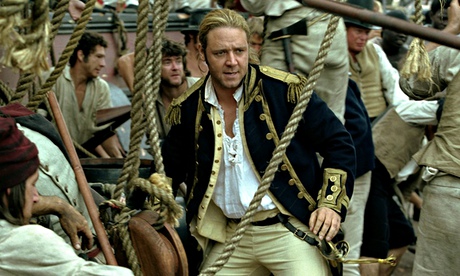What better way to mark the O’Brian’s centenary than by jumping on board with Captain Jack?

There are two types of people in the world: Patrick O’Brian fans, and people who haven’t read him yet. This second category includes many women who are put off by the seemingly excessive focus on ships. This worried me, too. I thought it would be all battles and no women: perhaps even (shudder) a seafaring Lord of the Rings
.
I have travelled the seas with Captain Jack Aubrey and Stephen Maturin and, I hope to tempt you to set sail on the “Aubreyiad”. I won’t deny that there are mentions of futtock shrouds, bowsprits and even main-studding-sails (just don’t try to say this out loud). Each of the novels begins with a diagram showing the 21 sails of a square-rigged ship. This may give the impression that you need to know – indeed care – about such things. This is only true to the extent that, to enjoy an episode of ER, you must understand the full implications of: “give me an ABG, CBC, chem 7, cardiac enzymes, and coag panel”. It’s possible to let it all wash over you – like the fast-talking political detail in The West Wing, or the slang in The Wire – and form a general impression of whether the wind is causing problems or the French ship is about to sink. (On the other hand, you could consult A Sea of Words, one of several guides to Jack’s world.) O’Brian is never heavy-handed with his research: it’s simply that the books are set in a perfectly realised world, which happens to be a ship at war.
There is vastly more to Jack than fair winds and rigging. For one thing, there is Stephen, the brilliant, bold, enigmatic Irish-Catalan naturalist-surgeon-spy. Although Jack doesn’t write up his physical charms, I’ve got a huge crush on Stephen: he is obsessional and secretive, but also fiercely intelligent, moral and passionate. For book after book, I willed the gloriously lithe Diana Villiers to succumb to his pursuit.
More
.
I have travelled the seas with Captain Jack Aubrey and Stephen Maturin and, I hope to tempt you to set sail on the “Aubreyiad”. I won’t deny that there are mentions of futtock shrouds, bowsprits and even main-studding-sails (just don’t try to say this out loud). Each of the novels begins with a diagram showing the 21 sails of a square-rigged ship. This may give the impression that you need to know – indeed care – about such things. This is only true to the extent that, to enjoy an episode of ER, you must understand the full implications of: “give me an ABG, CBC, chem 7, cardiac enzymes, and coag panel”. It’s possible to let it all wash over you – like the fast-talking political detail in The West Wing, or the slang in The Wire – and form a general impression of whether the wind is causing problems or the French ship is about to sink. (On the other hand, you could consult A Sea of Words, one of several guides to Jack’s world.) O’Brian is never heavy-handed with his research: it’s simply that the books are set in a perfectly realised world, which happens to be a ship at war.
There is vastly more to Jack than fair winds and rigging. For one thing, there is Stephen, the brilliant, bold, enigmatic Irish-Catalan naturalist-surgeon-spy. Although Jack doesn’t write up his physical charms, I’ve got a huge crush on Stephen: he is obsessional and secretive, but also fiercely intelligent, moral and passionate. For book after book, I willed the gloriously lithe Diana Villiers to succumb to his pursuit.
More
No comments:
Post a Comment